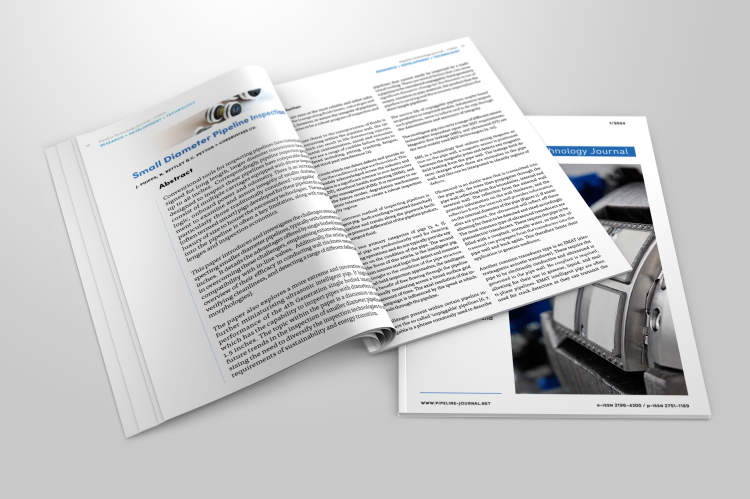Small Diameter Pipeline Inspection

Conventional tools for inspecting pipelines have historically been designed for long length, larger diameter transmission lines, typically up to 48 inches. Correspondingly, pipeline inspection gauges (PIGs) designed to inspect these pipelines have comparable diameters and consist of multiple carriages equipped with diverse inspection tools, logic, onboard power and odometry. There is an increasing requirement to examine and assure integrity of smaller diameter pipelines, particularly those traditionally considered ‘unpiggable’. Intelligent (often termed smart) pigs developed for these pipelines do not have the luxury of size to house the necessary technologies. The means of entry into the pipeline is often a key limitation, along with navigation challenges and inspection economics.
This paper introduces and investigates the challenges associated with inspecting smaller diameter pipelines, typically with diameters less than 12 inches. It details the advantages offered by single bodied intelligent pigs in overcoming these challenges, emphasising enhanced navigation and compatibility with in-line valves. Additionally, the article provides an overview of their efficacy in conducting wall thickness measurements, verifying cleanliness, and detecting a range of different defects (size and morphologies).
The paper also explores a more extreme and innovative instance of further miniaturising ultrasonic intelligent pigs. It highlights the performance of the 4th Generation single bodied intelligent pig, which has the capability to inspect pipes with diameters as small as 1.5 inches. The topic within the paper is a discussion on anticipated future trends in the inspection of smaller diameter pipelines, emphasising the need to diversify the inspection technologies to satisfy the requirements of sustainability and energy transition.
